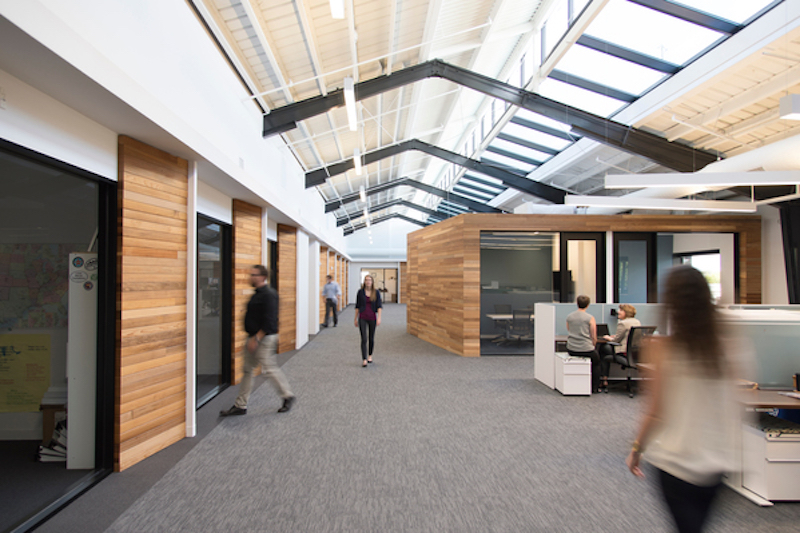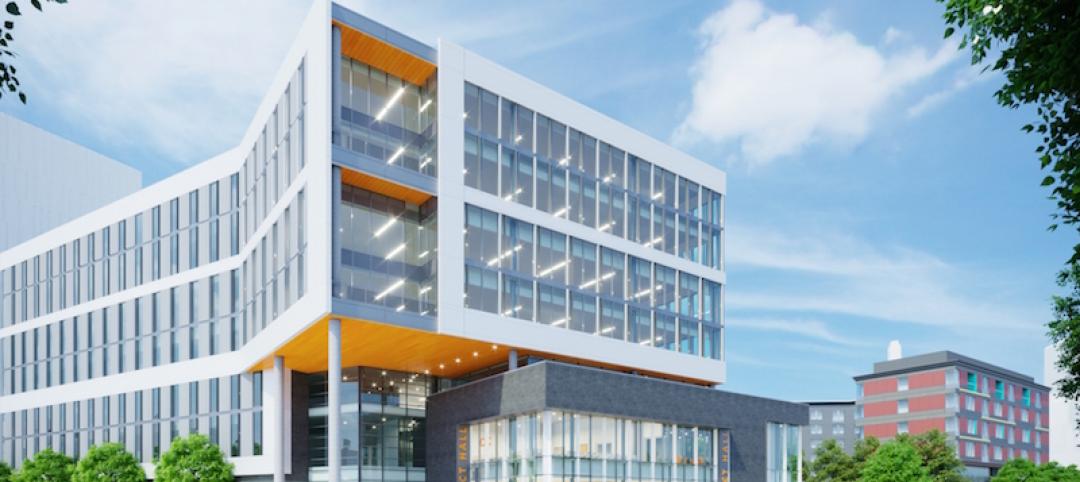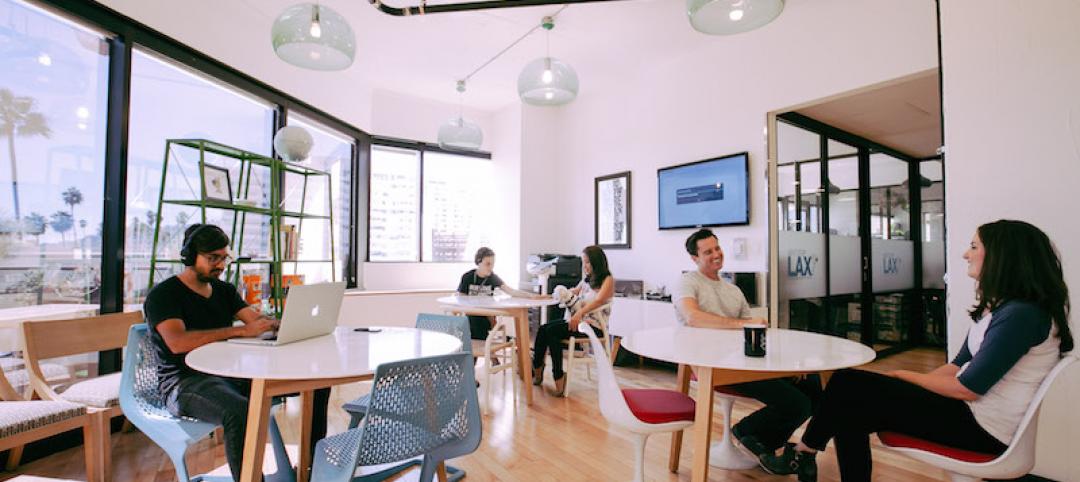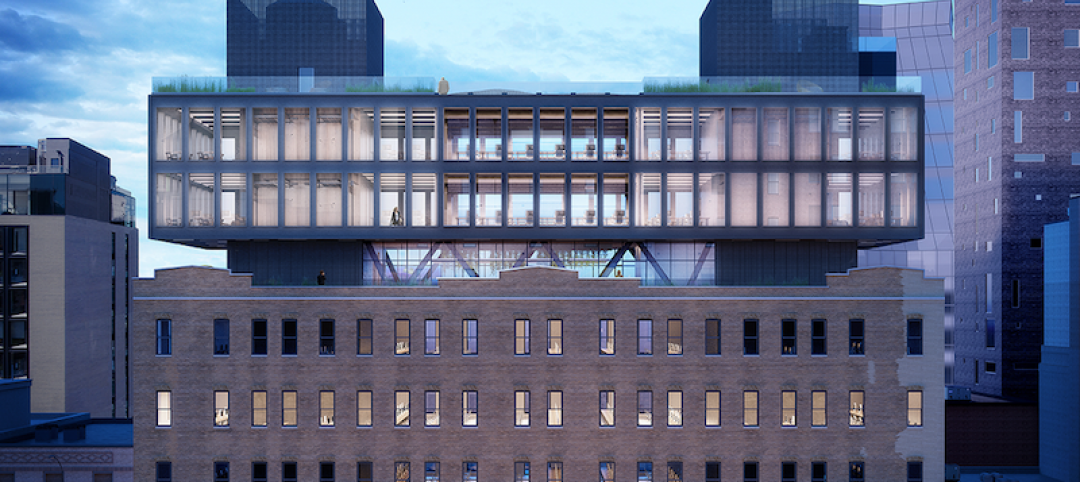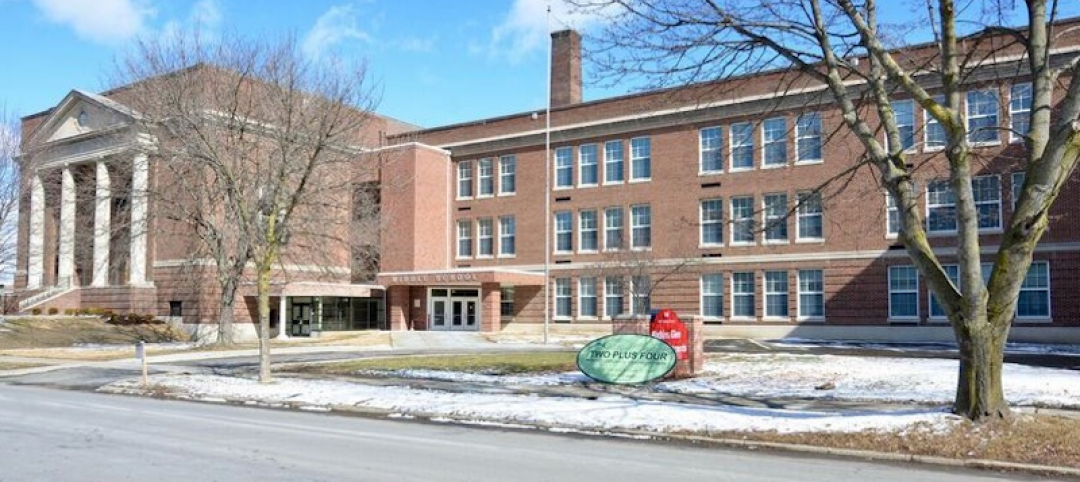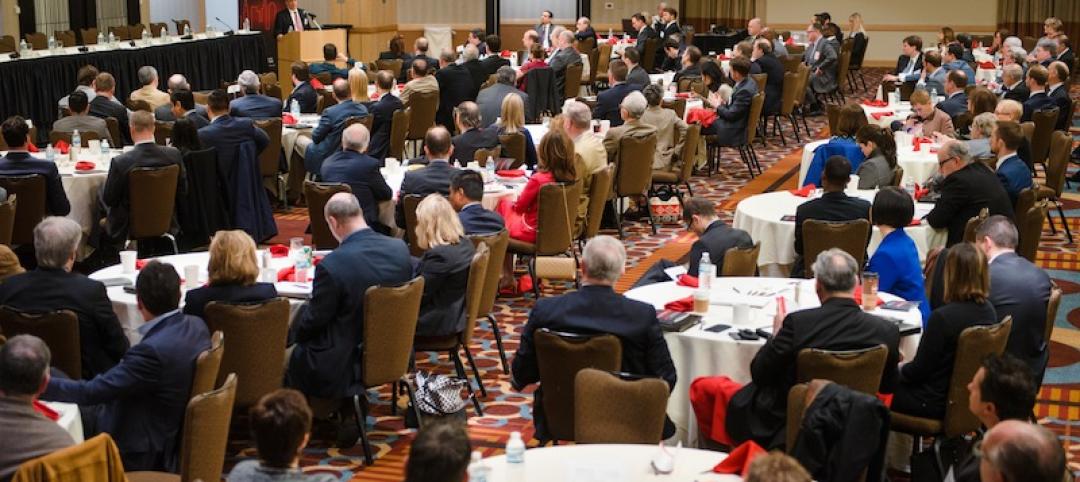Raleigh, N.C., is in the midst of a development boom. Since 2005 through July of this year, this metro has added 3,672 residential units, 1,000 hotel rooms, 346,000 sf of retail space and 1.5 million sf of office space downtown.
The Raleigh-Durham metroplex has seen more than $3.3 billion of investment in 250 miles of highway infrastructure, $3.2 billion last year in new capital investments, and more than 30,000 new jobs announced in 2016.
One of the companies that’s been part of this boom is Investors Management Corporation, a small investment firm that purchased a 16,000-sf building from CE Rental that once served as a storage facility for dishes, tables and dining products, with the intention of converting this space into IMC’s new headquarters.
“The entire district in which this building is located is undergoing massive change, with many old warehouses finding new life,” observes Michael Wagner, architect and Associate at the Raleigh office of Gensler, architect and designer on IMC’s adaptive reuse.
The IMC project is one of those case studies where location seemed to trump just about everything else. The building is on hilltop site that overlooks downtown Raleigh. But IMC had acquired a building that was a half-century old, prefabricated, uninsulated, and backed up onto a railroad line. Adding to this renovation’s complexity was the tight scheduling IMC required because the lease on the company’s old headquarters building was expiring.
“The client gave us a great charge in finding the ‘worst building with the best view.’ So we did,” says Chad Parker, Principal and Co-Managing Director at Gensler’s Raleigh office.
The Building Team—which included Optima Engineering (MEP), Lynch Mykins (SE), and Stewart (CE and landscape architect)—maintained the two-story building’s exposed structural members and cross bracing, as well as its existing brick façade. By limiting more elaborate changes to the building’s infrastructure, the team was able to use the North Carolina Rehabilitation Code and, therefore, save time and money.
“The intent from the start was to repurpose as many existing materials and finishes as possible.” recalls Wagner.
The location of this building informed its floor plan. Gathering spaces, initially intended for the lower levels, were moved to level two, where the design team added a large outdoor porch that creates a visual connection between IMC’s headquarters and the buildings within the city center and north of downtown.
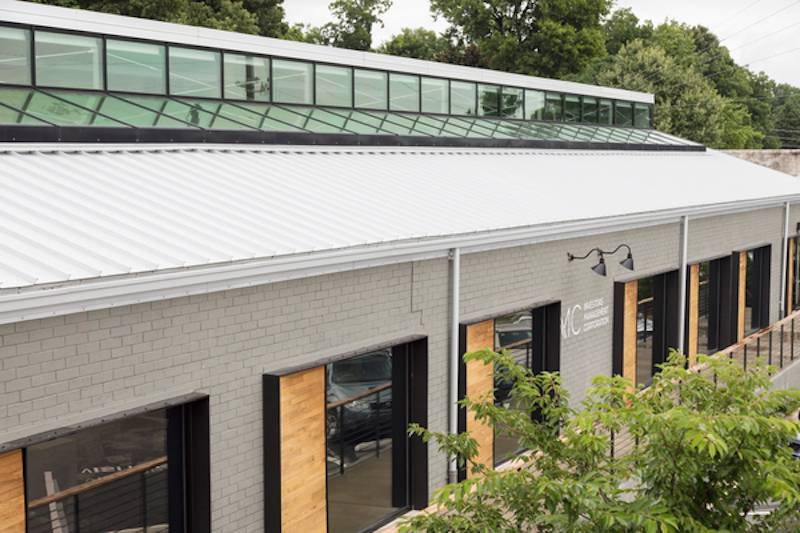
A linear skylight and clerestory running along the north-south axis lets more natural light into the building. Image: Chris Leonard/courtesy of Gensler
Because the back wall of the building bumps up against the property line, building codes prohibited glass on the rear façade. So to bring more natural light into the building, the Building Team installed a linear skylight and clerestory along the length of the brick-clad, single-story volume. Large glass openings along the building’s east façade replace eight- by eight-ft rollup garage doors, creating a direct connection to the outdoors.
The building, which dates back to at least 1981 according to tax records, was pretty barebones before its recent transformation, according to Wagner. It had no insulation in the roof or the wall. Off-the-shelf metal wall panels on girts had no interior finishes. All masonry walls were single wyeth, without insulation.
The Building Team added insulation inboard to the exterior face of wall when new interior framing and sheetrock were installed. The brick and metal panels were painted, but all weatherproofing, including an air barrier and batt insulation, was handled on the interior side of the existing wall.
The existing metal roof was left in place, and now provides the substrate for a new roof system that includes R-30 polyiso insulation as well as a new standing seam galvalume metal roof.
 An open deck lets workers take a break outdoors and provides views of downtown Raleigh. Image: Chris Leonard/ courtesy of Gensler
An open deck lets workers take a break outdoors and provides views of downtown Raleigh. Image: Chris Leonard/ courtesy of Gensler
To open the volume within the space, the Building Team demolished a wood frame interior mezzanine and two full-height CMU partition walls running perpendicular to the overall geometry of the building.
It also removed an existing freight elevator, and filled the hole in the second floor slab. The new framing for this infill became the center of the new reception space on level one. The existing stairs to the second level were repurposed, rotated 180 degrees, and reattached to the existing slab edge on level two.
The entire interior received new finishes. And the existing concrete floor was leveled to bridge a 2-inch offset in floor slabs, the result of previous building additions. A new exterior egress stair was added to the building’s south end.
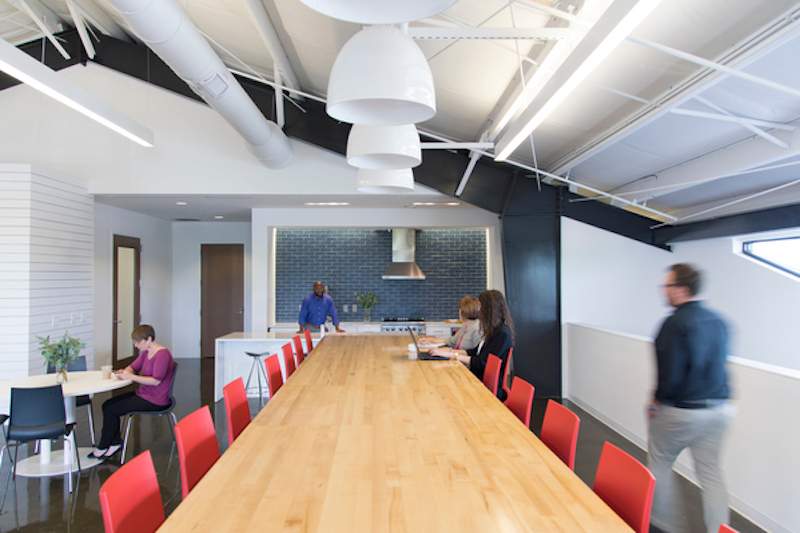
The gathering spaces within the headquarters were moved to the second level. Image: Chris Leonard/courtesy of Gensler
Wagner says that any further expansion to IMC’s new headquarters would have to be vertical and would also need to satisfy future parking demands on a site where parking is already limited.
This project was completed in early 2016. Several of IMC’s employees were allowed to move into the building the previous fall under a temporary certificate of occupancy. There are currently around 25 IMC employees working in the building.
Related Stories
Adaptive Reuse | Oct 5, 2017
Wexford’s latest innovation center breaks ground in Providence
The campus is expected to include an Aloft hotel.
Office Buildings | Jun 13, 2017
WeWork takes on a construction management app provider
Fieldlens helps turn jobsites into social networks.
Office Buildings | Mar 27, 2017
New York warehouse to become an office mixing industrial and modern aesthetics
The building is located in West Chelsea between the High Line and West Street.
Adaptive Reuse | Nov 9, 2016
Middle school transformed into affordable housing for seniors
The project received $3.8 million in public financing in exchange for constructing units for residents earning less than 60 percent of the area’s median income.
Adaptive Reuse | Nov 7, 2016
From fuel to food: adaptive reuse converts a closed gas station in Princeton, N.J., to a Nomad pizza
The original building dates back to the Modernist 1930s.
Hotel Facilities | Sep 7, 2016
Fish out of water: The site of a Birdseye frozen-food factory in Gloucester, Mass., transforms into a seaside hotel
The construction of this 94-room hotel and conference center pitted tourism proponents against locals who want to preserve this historic city’s fishing heritage.
Healthcare Facilities | Apr 24, 2016
A symposium in New Jersey examines how a consolidating healthcare industry can better manage its excess real estate
As service providers position themselves closer to their communities, they are looking for ways to redirect non-core buildings and land for other purposes.
Adaptive Reuse | Apr 7, 2016
Redevelopment plan announced for Chicago’s historic Cook County Hospital
The century-old, Beaux Arts architecture-inspired hospital will transform into a mixed-use development.


